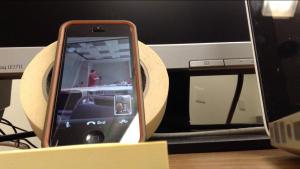I often get low around the new year. Perhaps, like every media outlet in the world, I spend too much time looking back and not enough time looking forward. When I look back on a year, I tend to focus on missed opportunities, mistakes, not-quite-good-enough moments. It’s a glass-half-empty approach that isn’t consistent with the optimism I try to bring to my work each day. Or maybe I simply forget the highlights, while I’m living in the slow pace of a holiday break.
So I was slinking through my holiday blahs, when it hit me that this year has really been full of highlights. It struck me that I’ve been working on big projects all year long, one right into the next, maybe consistently enough that working on really cool projects has turned into a habit. It’s easy to overlook the amazing stuff when you’re in the midst of habits – but in hindsight, these are the sort of habits that I want (need) to continue.
To close out the last five days of the year, I’m going to re-cap five of my favorite 2013 projects here, focusing on what was important and what I learned from the work. Call it a reminder – especially when I’m in the middle of the doldrums – that I’m capable of more than can be contained in a half-empty glass.
Here goes.
1. Presenting at NCECA – Houston, Texas, March 20-23
In fall of 2012, I contacted my friend Jared Ward about the possibility of putting together a proposal for the annual clay-world conference. Together, we drafted the essential question: Technology is making our earth more connected; how much energy should we devote to its use in the secondary ceramics classroom? What are some meaningful ways in which technology can enhance ceramics education?
For me, that essential question has been very real over the last couple of years of teaching. Whether the pressure is real or just perceived, I’ve felt some stress about updating my course content to include more time using technology, or otherwise updating to “21st century” methods. Sometimes that tech time feels like it is at the expense of the hands-on, messy problem-solving time that is so inherent to clay. Jared is an outstanding ceramics teacher who transitioned to working with educational technology a few years ago. He is equally as outstanding in his balanced perspectives on his new field.
NCECA accepted our proposal, and we spent several months collaborating from Utah to Pennsylvania, sharing ideas and trying some crazy projects. The presentation was basically an excuse to explore some big questions with more depth than we’d ordinarily spend time or space in our busy lives as educators. Big questions don’t have easy answers, but we were able to learn from each other and share a lot of resources in the process.
About a month before the conference, we learned that Jared wouldn’t actually be able to attend the conference in Houston. I would fly solo for an hour-long presentation in a NCECA conference hall. I was terrified. But thanks to Jared’s support, and the encouragement of my traveling companions Elaine, John, and others I met along the way, I think I pulled it off. I also blogged the conference, sharing the experience with my students. I’d tried this before, but I think this was the first time I actually succeeded in driving a two-way conversation.
What was important: Sometimes it feels like so many big questions about how education is changing are just swirling around in my own head. Collaborating with Jared brought me out of my own brain for awhile, sharing questions with someone who is also investigating them deeply. It was a reminder to me that I can collaborate, and that my strengths can bring a lot to an exploration. Also, the questions about how technology and crafts education relate are important ones, for so many reasons – so the investigation felt very relevant.
What I learned: So much about technology tools and best practices in my field – and a lot of reasons to keep advocating for mud. I also learned that preparation, organizing resources, and live blogging takes a lot of time – but that dedicating the quiet time and space to the work, even in the midst of the conference’s sensory overload, was very fulfilling.
Probably the biggest lesson was that I was capable of presenting at a national level, not vomiting or running from the stage in fear, and maybe even doing it pretty well. The takeaway was that I’ll look for an opportunity to do this sort of investigation-into-presentation again. It was a great excuse to learn, and I was surprised at how much I enjoyed the adrenaline rush.
You can download most of our conference resources at the companion site we created.








